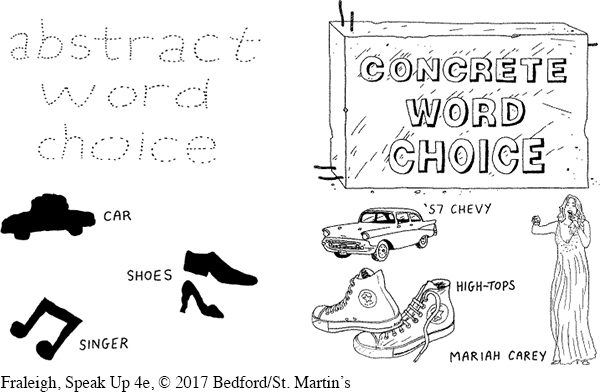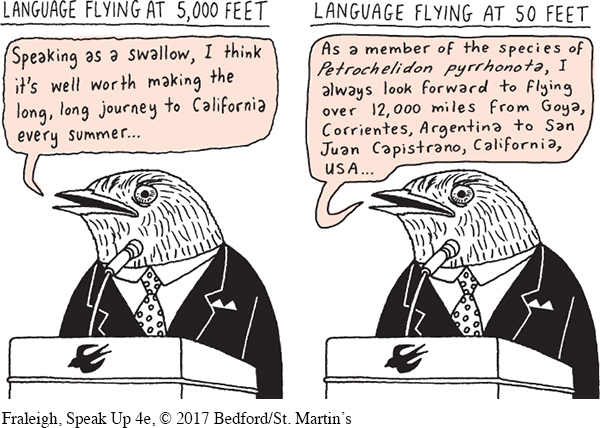Concrete Words
Whenever possible, strive to use concrete words instead of abstract ones. What’s the difference? A concrete word is specific and suggests exactly what you mean. An abstract word, on the other hand, is general and can be confusing and ambiguous for your audience. Consider the following four sentences, which range from abstract to concrete:
This past week, Jane arrived in a vehicle. (abstract)
Four days ago, Jane arrived in a car. (less abstract)
Last Tuesday at noon, Jane arrived in a blue Toyota. (more concrete)
Last Tuesday at noon, Jane arrived in a blue 2008 Toyota Corolla. (most concrete)
Only the third and fourth sentences convey in specific terms how and when Jane arrived. If this information is relevant to the presentation, either of these sentences would help the speaker convey more information than the first and second sentences.
346

This does not mean that you should never use general language. In fact, some situations call for a general language style. In the language of speechwriters, this is the difference between speaking from “five thousand feet, as opposed to fifty feet.” When you want to describe a concept or theory from a broad perspective and give the audience the big picture or the grand vision, you invariably will use general language. Sometimes speakers want to begin with general concepts (five thousand feet) and then move toward specific details (fifty feet). For example, in his 2015 State of the City address, New York mayor Bill de Blasio used both lofty language and grounded examples to describe his goals and accomplishments. He began with general language:
If we do not act—
347

Mayor de Blasio then followed up with concrete examples:
And while we have so much more work to do, 2014 was a year of great progress in our effort to address inequality and lift up our families. Some examples:
We achieved full-
We nearly doubled enrollment in after-
By executive order, we expanded living wage coverage to 18,000 workers.
With the help of the City Council—